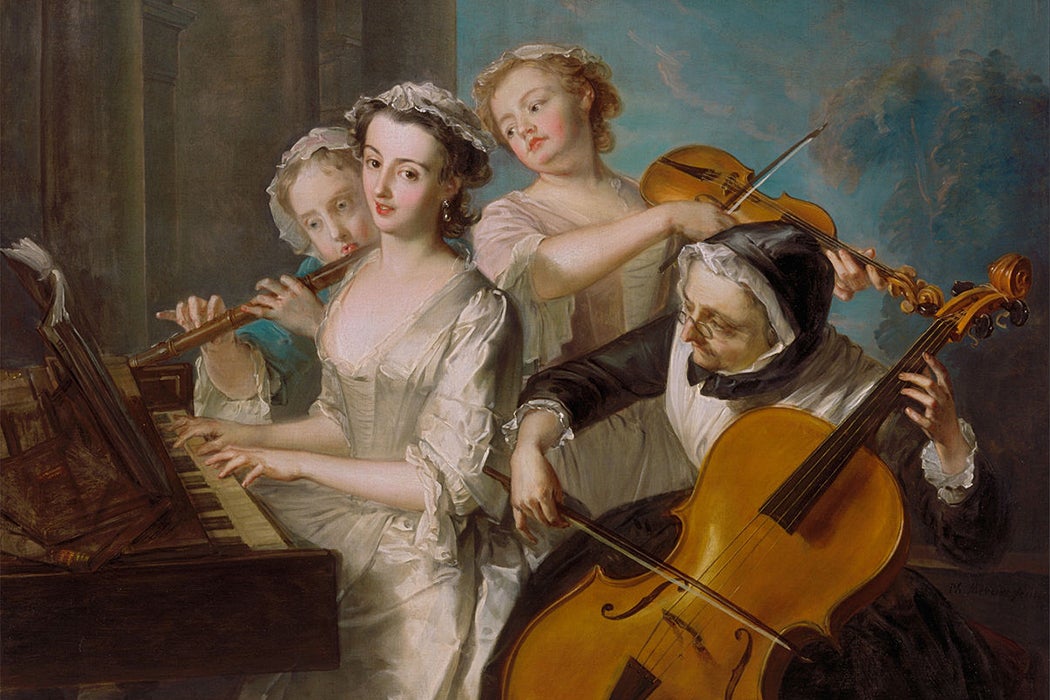When we play one of Mozart’s or Beethoven’s compositions, or when we hear one, we probably aren’t hearing what they heard or what they thought in their heads as they composed. Their pianos were quite different from the ones we play today. Modern pianos are the product of a 600-year evolution. The instrument has evolved from the mention of Hermann Poll’s clavicembalum in 1397, through various clavichords and harpsichords to the modern grand piano.
The piano emerged between 1760-1780, overtaking the harpsichord largely because it it could play soft and loud. By 1845, the piano had reached a sound like what we hear today. But early pianos needed constant maintenance. And the piano player needed a mechanical knowledge of how they worked—things like leather dampers, oddly-placed stops to change from forte (loud) to piano (soft), and even, in some cases, a knee pedal. Changing from forte to piano with only your fingers was a radical development.
Therefore, as Malcolm Bilson notes, it’s difficult to know what Beethoven meant when he wrote sforzando (sudden or loud emphasis) while composing on his early Viennese piano. The modern piano has no real sforzando, it only has loud notes. Similarly, Chopin loved the sound of Viennese Graf pianos. But can we ever repair and reproduce a Graf to the extent that we hear exactly what he heard in the early 1800s?
Mozart’s 1791 Walter fortepiano was restored and played in 2012. That audience perhaps came the closest possible to experiencing the exact sounds Mozart was creating when he composed than anyone else in decades. Pianos in Mozart’s day did not produce the same constancy of sound that we are accustomed to. Some say that Steinway built the first piano with constant sound, and that wasn’t until 1860, after Mozart, Beethoven, and Chopin had died.
But music is a combination of those sounds we wish to hear and those sounds we can make. The sounds we are capable of making are a result of technology and consumer demand; in piano-making, this involves constructing the cabinet and the workings.
Weekly Newsletter
Get your fix of JSTOR Daily’s best stories in your inbox each Thursday.
Privacy Policy Contact Us
You may unsubscribe at any time by clicking on the provided link on any marketing message.
Piano-making has always required many hands, despite the addition of machines from the mid-nineteenth century. In 1870, it took about 100 workers to make each Viennese Bösendorfer. The birth of each Steinway piano still requires at least one to two years in the factory. It also requires hundreds of specialized workers—like the “cabinet rubber,” who spends one full day just polishing the cabinet. The resulting modern pianos look and sound like modern buyers want them to, which is not necessarily how pianos used to sound.
As Bilson put it:
Indeed, it is not at all inconceivable that some years hence the reviewer of a Beethoven piano recording on a Steinway piano will begin his review: “One can begin to wonder what is actually gained by tackling Beethoven’s most ambitious keyboard music on an instrument designed and built many years after his time.”







